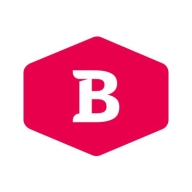

Microsoft Power Apps and Betty Blocks compete in the low-code application development space. Microsoft Power Apps appears to have an advantage in integration capabilities, while Betty Blocks is stronger in flexibility and rapid development.
Features: Microsoft Power Apps includes robust integration with the Microsoft suite, extensive support for various data sources, and efficient business application building. Betty Blocks offers an intuitive development environment, comprehensive scalability, and support for complex custom applications.
Ease of Deployment and Customer Service: Microsoft Power Apps benefits from Azure integration for streamlined deployment catering to larger enterprises, while Betty Blocks offers automatic deployment and exceptional personalized support, ensuring smooth transitions from prototype to production.
Pricing and ROI: Microsoft Power Apps is competitively priced with a pay-as-you-go option, which is economical for large implementations. Betty Blocks focuses on flexible pricing and promises faster market times, enhancing ROI through efficient development cycles.
| Product | Market Share (%) |
|---|---|
| Microsoft Power Apps | 12.2% |
| Betty Blocks | 0.3% |
| Other | 87.5% |


| Company Size | Count |
|---|---|
| Small Business | 30 |
| Midsize Enterprise | 17 |
| Large Enterprise | 50 |
From mobile apps to (customer) portals to back office management and everything in between. The Betty Blocks platform’s ease of use supports every size or complexity of your app. Go as far as you like, the easiest way possible.
Microsoft Power Apps is a rapid application development software and low-code development platform. The solution consists of a suite of apps, services, connectors, and a data platform. It provides an environment for building custom apps which is suitable for different businesses.
Microsoft Power Apps allows users to not only build applications, but also connect them to Microsoft's other sources, including the underlying data platform Microsoft Dataverse, as well as online and on-premise sources such as SharePoint, Dynamics 365, and Microsoft 365. The applications built using Microsoft Power Apps have a responsive design that makes them suitable for work in browsers and on mobile applications on different devices.
The no-code side of the product makes it suitable for complete beginners to app building, allowing them to easily create fully functional applications with many features. The solution also has a specialized platform for developers where specialists can access data and metadata, create custom connectors, integrate with external data, and apply business logic. The solution allows users to create three types of apps: canvas, model-driven, and portal. They are made using:
Microsoft Power Apps Features
The three different design tools of the solution, Power Apps Studio, App Designer, and Power Apps Portals Studio, come with various features which allow users to utilize the tools. Some of these features include:
Microsoft Power Apps Benefits
The product brings various benefits to organizations and individuals who utilize it. Some of the biggest advantages of Microsoft Power Apps include:
Reviews from Real Users
An IT Specialist (INFOSEC) at a government appreciates this tool because it is low-code, low learning curve, and reduces manpower.
Rafael T., a data engineer at NTT Security, likes Microsoft Power Apps, because it is great for making apps quickly, has helpful support, and integrates with Power BI.
We monitor all Rapid Application Development Software reviews to prevent fraudulent reviews and keep review quality high. We do not post reviews by company employees or direct competitors. We validate each review for authenticity via cross-reference with LinkedIn, and personal follow-up with the reviewer when necessary.